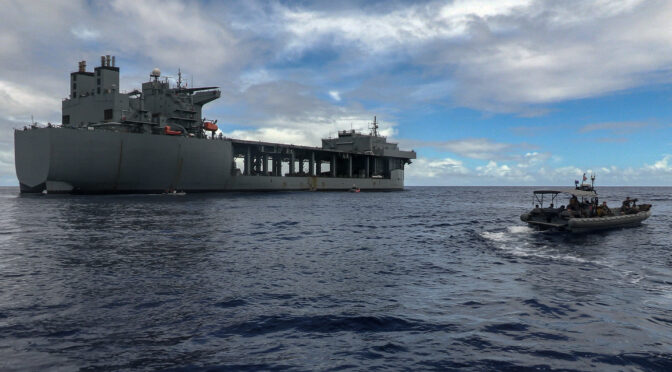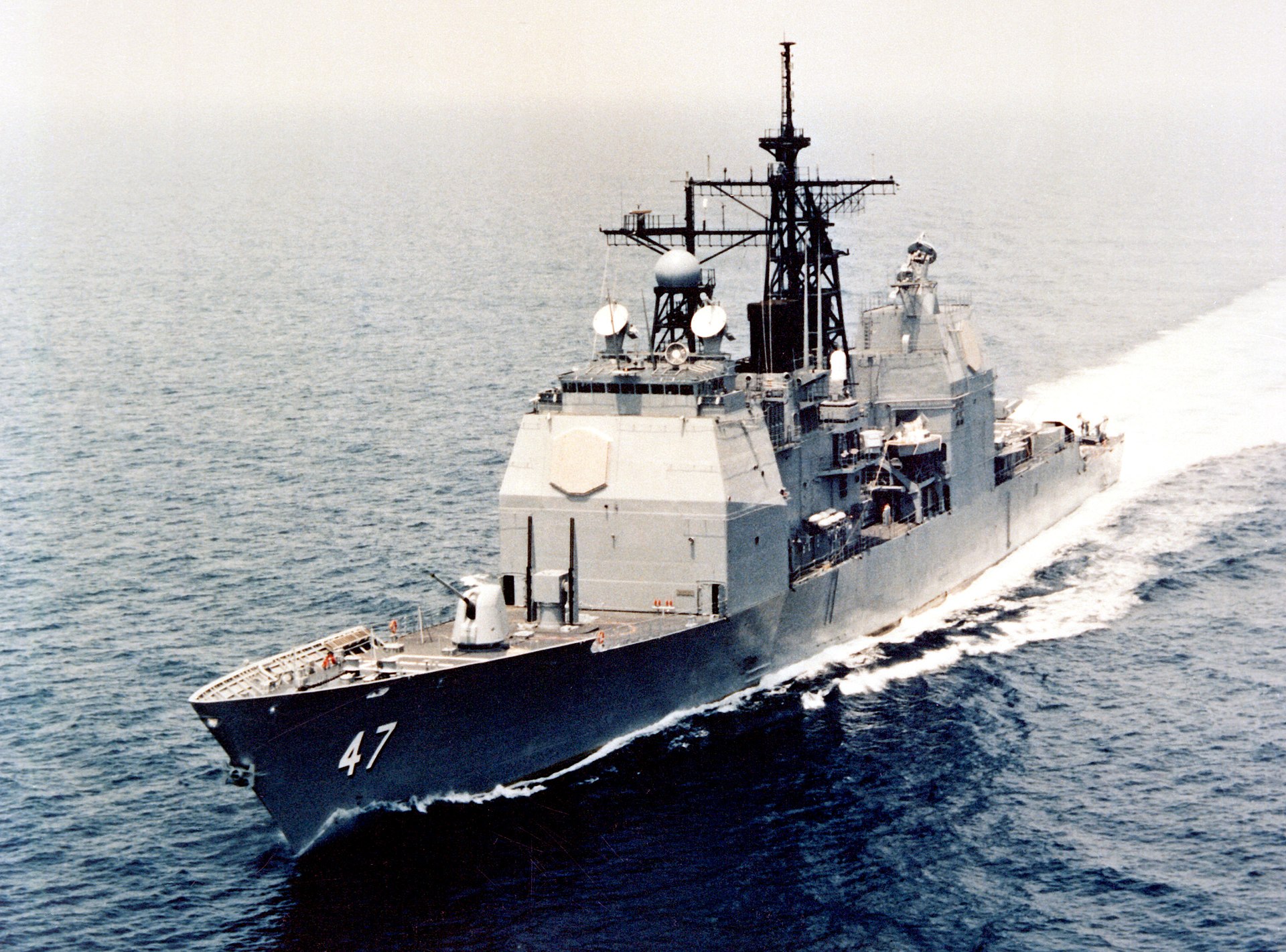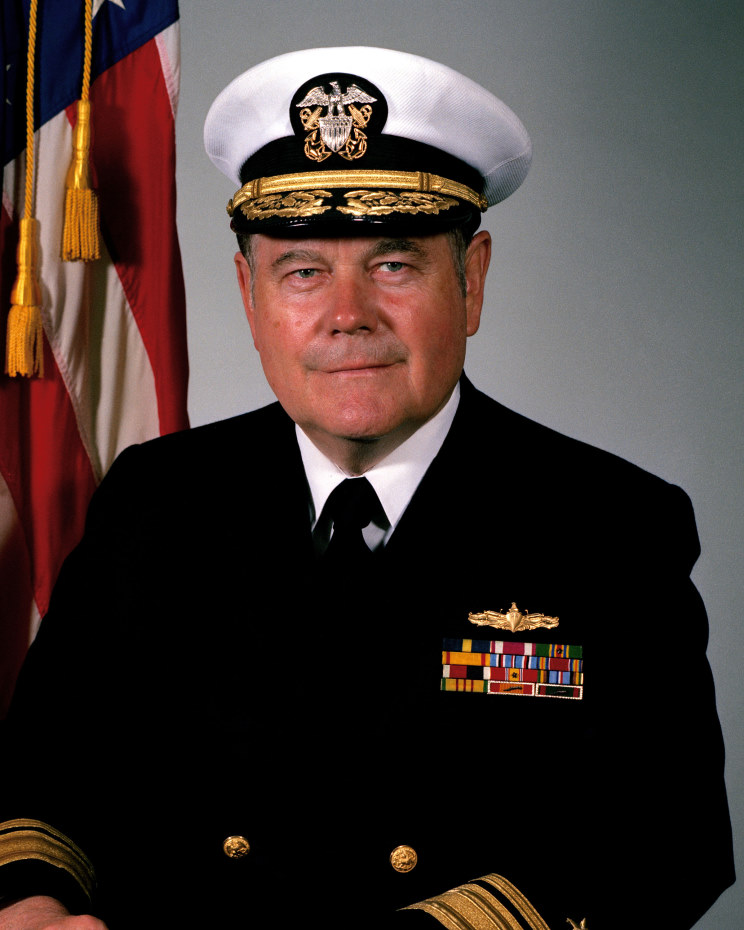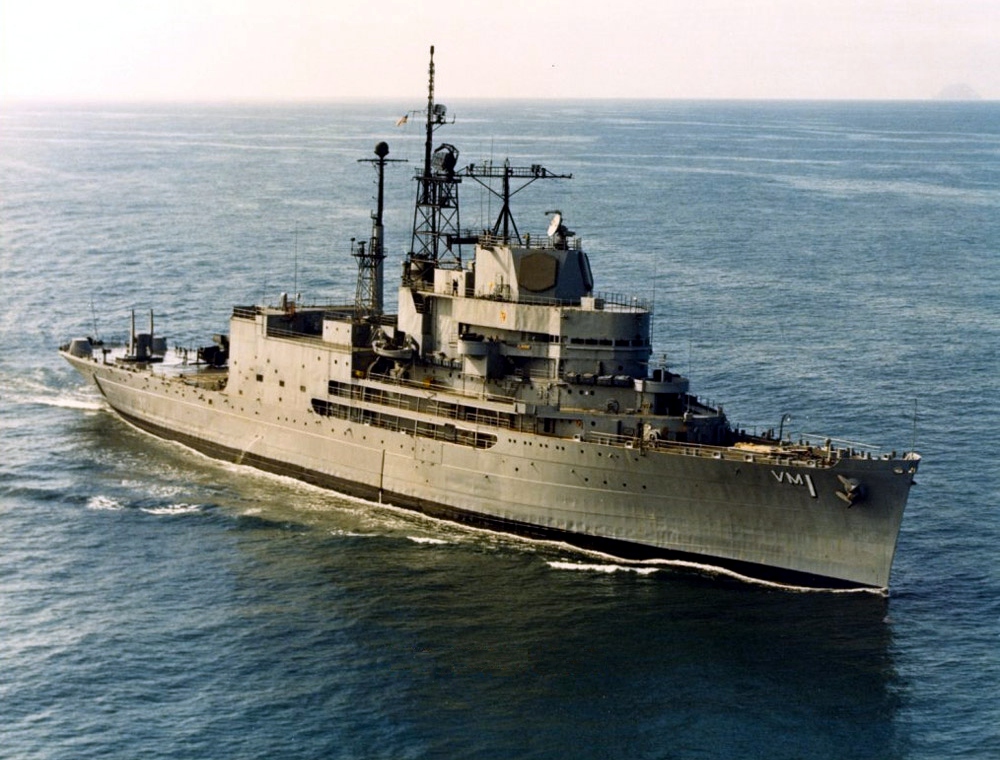By Commander Daniel T. Murphy, U.S. Navy
Knowing How to Coalesce
The Office of the Director of National Intelligence Annual Threat Assessment has yet again predicted an increasingly complex global security environment and recommends that U.S. military services collaborate more with regional allies.1 In recent years, U.S. forces conducted additional and more extensive bilateral and multilateral joint training, exercises, and operations across all geographic combatant commands, especially in the maritime domain. As a result, the world’s waterways remained relatively safe. When threats did emerge or increase in specific localities (as now in the Red Sea), regional coalition navies, already regularly training and exercising together, responded with scaled-up operations, adjusted their tactics as necessary, and imposed a settling of the security situation. Sometimes, we (U.S. forces) take a leading role, and other times, we do not. Either way, the world’s maritime services seem to intuitively know how to coalesce. This is good news because the ability to coalesce can be built upon, especially in the problematic regions of the world. So, what enables that coalescence?
Expeditionary Sea Bases as an Organizational Learning Nucleus
A 2019 study explored how organizational learning within the U.S. maritime services (both Navy and Coast Guard) and with partner countries is partly the reason for that coalescence. Organizational learning is a theory, a body of frameworks and methods by which organizations or groups of larger enterprise-level organizations learn and improve over time. The study presented evidence that organizational learning in the maritime security domain evolves in stages, and the evolution can be accelerated through purposefully dedicated organizational learning elements or “nuclei.” Over time, “nuclei” inject and normalize organizational learning principles and methods into an organization’s day-to-day routines. Some examples are the Navy’s various schoolhouses dedicated to specific mission areas and jobs (rates), the Naval War College, and afloat training groups.2 The study suggests more can be accomplished by placing organizational learning centers in multiple geographic regions.
The Navy’s expeditionary sea base (ESB) is exactly the right platform to serve as an organizational learning nucleus in each regional combatant command. The 90,000-ton ESB has an overall length of 785 feet, a 164-foot beam, a 40-foot draft, a 15-knot speed, and a range of 9,500 nautical miles. According to Navy documents, the ESB serves as a sea-based platform for airborne mine countermeasures, special operations forces staging, and a “transfer vessel,” or “lily pad,” for moving equipment and cargo between ships and shore when a land base is unavailable.3
The ESB has one of the largest flight decks in the Navy, with four rotary-wing landing spots. Beneath the flight deck is a mission deck that can accommodate a multitude of special, coastal, and mine warfare vessels. The mission deck provides 25,000 square feet for containerized “plug-and-play” modules like command and control or battle management, living quarters, medical facilities, and weapons. Weapon modules could include the venerable high-mobility artillery rocket system. Other potential payloads include heavy equipment and supplies.
An ESB is crewed by civilians from Military Sealift Command and military personnel commanded by a Navy Captain. The ESB’s aft superstructure includes workspaces and berthing for 44 civilian mariners responsible for the ship’s navigation, deck operations, maintenance, and damage control. The ship’s forward superstructure houses 100 Navy officers and sailors, accommodations for 250 embarked personnel, multiple networked workspaces, a large helicopter hangar, and several sizeable armories and magazines. The Navy crew and embarked personnel are responsible for all operational command and control, air operations, weapons handling and management, mission deck operations, and force protection. Four ESBs have been delivered to the Navy thus far, with the fifth, the USS Robert E. Siamnek (ESB-7), currently under construction.4
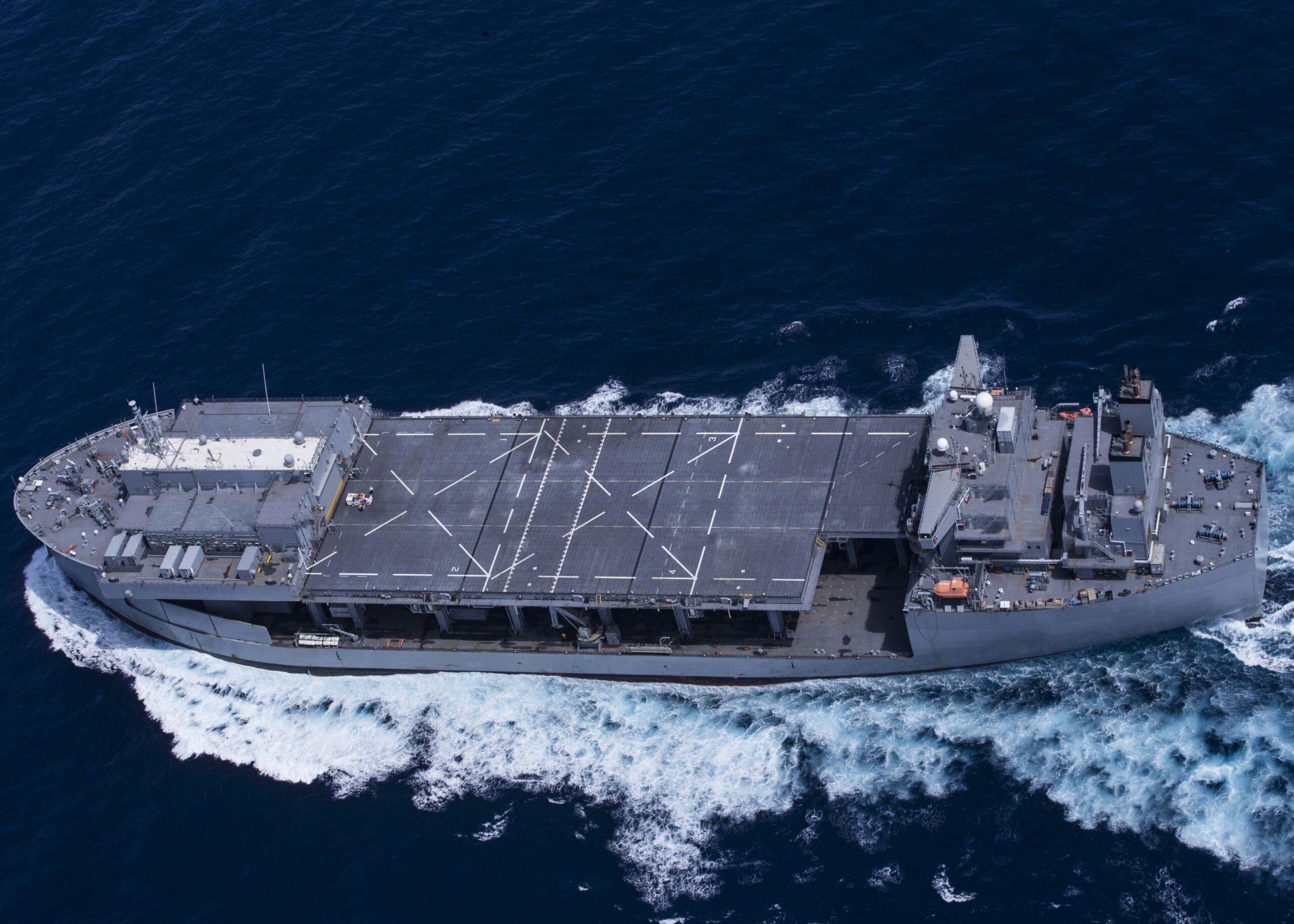
The ship’s ability to carry embarked personnel and its large flight and mission deck make the ESB a potentially significant organizational learning nucleus. The following vignette will provide an example use case in the U.S. Southern Command area of operations. The ESB can accommodate more than twice the number of partner country liaison personnel that typically come together yearly to participate in regional exercises such as Panamax. With its numerous workspaces, the ESB would accommodate all joint staff and partner country liaison elements. The flight deck would serve every rotary wing aircraft type flown by partner nations. These capabilities are demonstrated. During its 2020 deployment in the Arabian Gulf and Indian Ocean, USS Lewis B. Puller (ESB-3) operated nine different types of aircraft and unmanned systems from multiple joint and coalition partners. By deployment’s end, more than 1,200 launches and recoveries were executed.5
Similarly, the ESB’s mission deck would provide a rafting and support platform for virtually every coalition partner patrol vessel in Southern Command. For example, Colombia’s new fourth-generation Patrullera de Apoyo Fluvial riverine vessel and Mexico’s Tenochtitlan and Interceptor-class coastal patrol vessels. Partner navies could potentially develop dedicated containerized mission support centers and berthing compounds to integrate with the ESB’s mission deck. Recent ESB deployments in Central Command and European Command demonstrated the ship’s ability to raft and support various patrol craft-sized vessels.
New Platform + Paradigm Shift = Force Multiplier
The ESB is uniquely qualified for the role proposed in this article; however, the author would like to emphasize that the recommendation is not only the repurposing or reorienting of a type of ship. The idea is to use the ESB as a nucleus for something new and transformational. To begin with, the vessel would become the centerpiece of most annual large-scale exercises like Panamax. Between exercises, the ESB would visit partner nations and participate in regular day-to-day operations, potentially helping those countries extend the range, endurance, and capabilities of their patrol vessels and aircraft (including unmanned systems) for enforcement activities like combatting piracy, drug smuggling, and illegal fishing. While these enforcement activities seem a low priority for U.S. naval assets, such activities enforce sovereignty, elevate the legitimacy of local governments, and provide area stabilization with increased maritime domain awareness.
From a personnel standpoint, the ESB should carry a permanently embarked multi-national organizational learning team of three to four members to provide a battle-rhythmic, regionally focused lessons-learned capability. The team would observe daily operations, facilitate assessment and reflective sessions, and develop and disseminate refined tactics, techniques, and procedures to all coalition partners. The goal is to significantly sharpen interoperability. While the team might include a combatant command’s knowledge manager or a Joint Lessons Learned Information System operator, the group would be led by a senior naval officer. This naval officer must understand the idea of the ESB mission as something big, new, and transformational. The team leader role could rotate between countries, as does leadership with other combined commands, such as Combined Task Force 153. Reservists could also play a significant role in reducing the burden on already stretched active-duty crews.

Imagine a Scenario
Imagine a 2004 large-scale natural disaster, like a Tsunami, somewhere in the developing world. The disaster devastated multiple countries, with hundreds of thousands of people missing, displaced, starving, and in need of medical assistance. A prepositioned ESB becomes the disaster response’s central command and control node. Liaison elements from each affected country fly directly to the ESB using their and U.S. aircraft. Dedicated containerized command and control modules and berthing areas, some either developed by or jointly with the affected partner nations, are already on the mission deck. Because of past exercises with the ESB, fly-on partner teams are already familiar and seamlessly integrated. Liaison elements arrive from the United Nations Office for the Coordination of Humanitarian Affairs, the Red Cross, and other non-governmental organizations. The United Nations 11 Global Cluster Coordinators arrive to coordinate food security, health, nutrition, shelter, and other disaster essentials. United Nation’s coordinators, too, stand up the workspaces with which they are already familiar.
Search and rescue aircraft, surface vessels from the affected countries, and assisting countries begin arriving and departing around the clock. Coast guard, navy, and law enforcement agency vessels from multiple countries raft up nightly to the ESB for rest, stores replenishment, and refueling from the nearly half-million gallons of ESB reserve fuel storage. This allows lower-endurance coastal vessels to remain on or near the station without returning to port. The ESB’s capability as a logistics node (aka “lily pad”) is displayed as food, water, and medicine move through complex supply chains from global sources to delivery points ashore. The security detachment aboard maintains force protection of the vessel during the entire evolution, a necessary detail if in waters contested by militias or pirates.
Now, with multiple partner country liaison elements working alongside one another in the ESB’s workspaces and mission deck, imagine that Country A needs something specific from Country B. Perhaps they need to request urban search and rescue (USAR) assistance for a collapsed building. They would not need to waste time struggling to establish phone connections on land-based networks that may be overloaded or damaged by the event. Instead, Country A’s liaison officer simply walks across the mission deck to Country B’s “compound,” knocks on the container door, and says, “We need some help from your USAR guys.” This is essentially the vision for how the United Nation’s 11 Cluster System and the U.S.’s emergency response framework system are intended to work in a traditional onshore construct like the Federal Emergency Management Agency operations center. In many austere or semi-permissive environments, the challenge in responding to disaster is getting the command-and-control personnel in place quickly, housed, fed, and connected. To that end:
- The ESB is a heliport, allowing liaison elements to quickly fly aboard using diverse military or civilian-type rotary-wing aircraft.
- The ESB contains ready networks and information technology infrastructure, allowing liaison elements to quickly establish connectivity between embarked parties, home agencies ashore, and overseas.
- The ESB provides substantial messing and berthing, allowing long-term sustained support for deployed personnel.
- ESB would provide familiarity. It would be the platform on which we regularly exercise and learn together and the platform where we coalesce in times of crisis. Thus, responders would know where to go and what to do when they get there.
Often, the U.S. Navy and Coast Guard operate in concert with partners in areas of the world that possess less sophisticated platform capabilities. These platforms are optimized for their local, littoral battlespaces and possess less capable weapons and sensors. This creates integration issues due to endurance and classification. U.S. destroyers, littoral combat ships, and national security cutters are overqualified for such missions; their robust sensor suites and classified networks limit efficacy in these engagements. Considering that alliances are the true generation of power projection for the U.S. military, this is where the ESB can unburden U.S. tier-one combatants while providing more meaningful integration opportunities to less capable navies and coast guards.
Final Thought – Marketing Matters
In recent years, the world’s waterways have remained relatively safe from conflict. One of the reasons for that safety is that global maritime services seem to intuitively know how to coalesce as regional maritime security enterprises. Organizational learning is a significant enabler of that coalescence, and purposefully dedicated organizational elements (nuclei) help accelerate organizational learning. The ESB is the perfect platform to be a regional nucleus for the U.S. Navy and partner country military entities and coast guards. We just need to reposition the ESBs to the right locations, “market” them appropriately to military decision-makers, and use them in bigger and more creative ways.
Commander Daniel T. Murphy is the Senior Intelligence Officer at the U.S. Navy Fourth Fleet Reserve, an Adjunct Professor of National Security and Intelligence Studies at Northeastern University, and a scholar on how organizational learning enables maritime security.
References
1. “Annual threat assessment of the U.S. intelligence community.” Office of the Director of National Intelligence, 2023.
2. Daniel T. Murphy. “How Combined Navies and Coast Guards Coalesce: A Maritime Forces Learning Model,” Center for International Maritime Security (CIMSEC), April 10th, 2019. The 2019 study built on 80+ years of organizational learning by a multitude of researchers, including Dewey (1938), Lewin and Lewin (1948); Schon (1983); Argyris and Schon (1978, 1996); Argyris, Putnam, and Smith (1985); Revans (1980, 1982); Senge (1990); and Watkins and Marsick (1993, 1999). While scholars have not sufficiently studied ATG’s organizational learning role in the Navy, the Army’s Center for Army Lessons Learned (CALL) has been studied by numerous scholars, including Margaret and Wheatley (1994), Gerras (2002), Williams (2007), and DiBella (2010).
3. U.S. Navy. “Expeditionary Sea Base Required Operational Capabilities and Projected Operational Environment,” Office of the Chief of Naval Operations, 2015.
4. General Dynamics National Steel and Shipbuilding Company (NASSCO). ESB Program, 2021.
5. Daryle Cardone, Ben Coyle, & Daniel Murphy. “Assessing the Expeditionary Sea Base,” USNI Proceedings, January 2023. Pg. 149, 439.
Featured Image: U.S. Marines aboard rigid hull, inflatable boats prepare to deploy a team onto the expeditionary sea base USS Miguel Keith (ESB-5) during a visit board search and seizure exercise in the Philippine Sea, Aug. 17, 2022. U.S. Marine Corps photo by Lance Cpl. Christopher W. England

